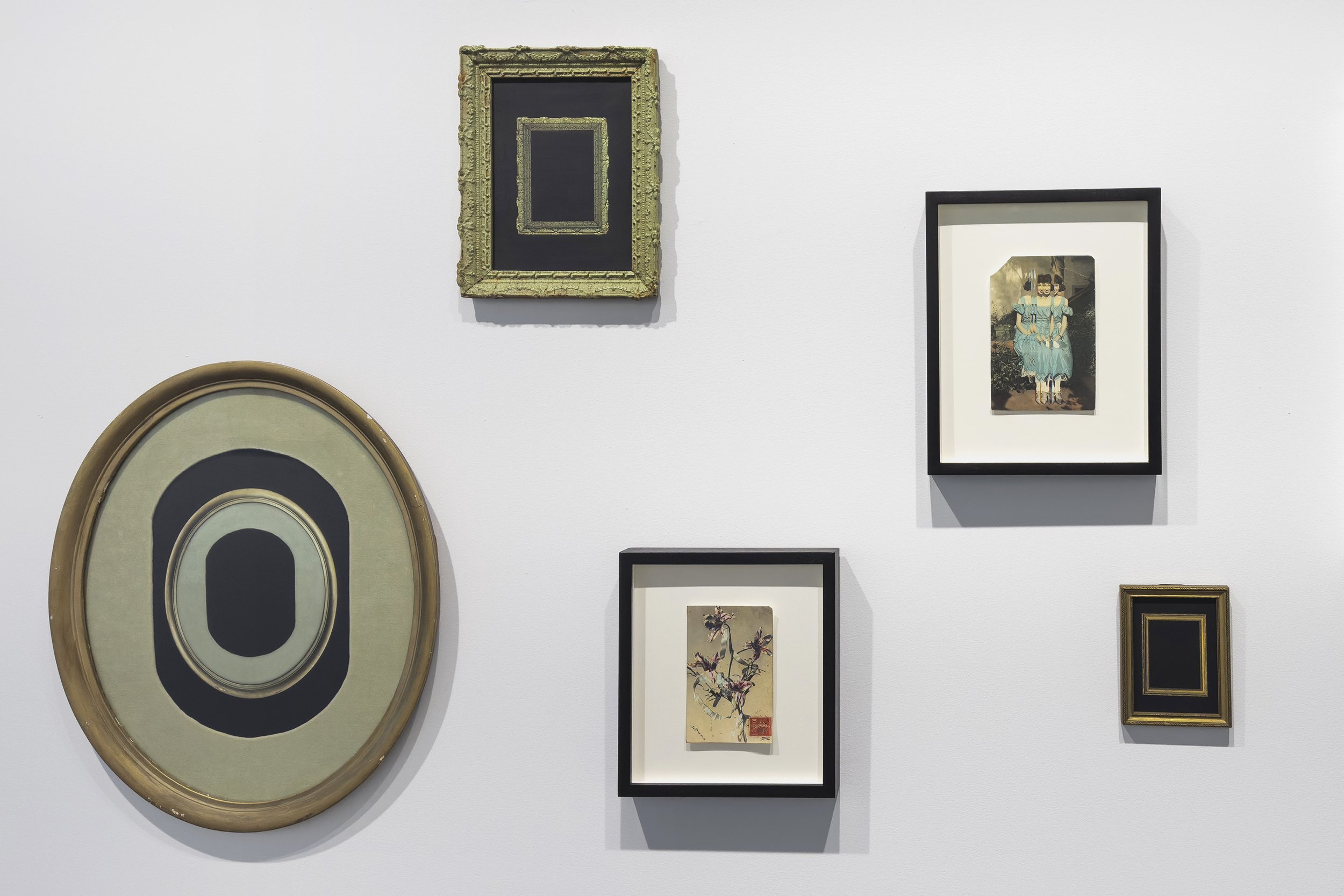New work from Madge Cameron
The Dreamer, 2024
A new iteration of Fixed began in 2022, when Cameron found herself equally alarmed and intrigued by the discovery that original analog snapshots in the archive were showing signs of digital manipulation and deterioration. Photographs that had never been digitized by Cameron had apparently begun altering of their own accord, or via the hand of an unknown ghost librarian in the digital ether. “It’s fantastical,” Cameron said. “It seems to represent a dissolution of the boundaries between our physical, analog world and this ever-expanding digital one. What does it mean if some ‘Artificial Intelligence’ can reach out and alter our physical reality? What does it mean when we can’t be sure of a safe retreat into an analog space if we find overwhelming corruption in a digital one? What does it mean that these alterations, though undeniably lossy and destructive, are also, somehow, mysterious and beautiful?”
Installation views of Fixed and Vanishing Point from the 2-person exhibition After Image: Andy Mattern and Rachel Phillips
Chung 24 Gallery, San Francisco, 2024
Album Pages
Cinematic Sisters, 2024
Distressed Pigment Prints on 5x8 inch Facsimile Album Page
Edition 5 plus 2 AP
Lost and Found Photographs
Photographic Postcards
A digital process
We tend to think of the relationship between analog and digital photography in linear terms; the keenly tangible, chemical rise of the medium in the 19th century giving way to the disembodied pixels that have taken up residence in record numbers in “the cloud” the last few decades.
The word digital dates back to the 15th century. Coming from the latin word digitus, it meant the numbers up to ten which could be counted on the digits of two hands. As Corey Keller notes in an essay about the tactile, embossed photograms of Klea McKenna, the word therefore originated in connection to notions of touch and the measure of things relative to our bodies. It wasn’t until the late 1930’s that the world shifted toward our modern understanding of digital as "using numerical digits,” especially on computers which run on data in the form of digits.
This work asks what happens if we see the relationship between digital and analog photographs as circular, iterative, and interwoven instead of linear; digital replacing analog in the history of the medium. How might analog objects be translated into digital data, and more so, how could that data re-manifest backwards into something that can again be held in the hand.
A doubly digital object!
This work begins with looking and collecting wherever I go, gathering source material from the magical repository of vernacular photographs floating around in the world, a discarded history.
Next, I scan the original snapshots, introducing digital artifacts as I do, then composite a selection of those digital artifacts into a straight digital rendering of the photograph.
I make a print of the resulting image, reproduced at 1:1 scale to the original snapshot, and gently hand-distress—sanding, bending, inking, spattering… working in digitally—by hand—the evidence of time and life embedded in the original object and carrying that evidence forward to the future history of this newly made object.







































